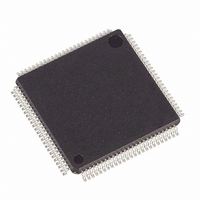DS21Q50L Maxim Integrated Products, DS21Q50L Datasheet - Page 62

DS21Q50L
Manufacturer Part Number
DS21Q50L
Description
IC TRANSCEIVER E1 QUAD 100-LQFP
Manufacturer
Maxim Integrated Products
Datasheet
1.DS21Q50L.pdf
(87 pages)
Specifications of DS21Q50L
Function
Transceiver
Interface
E1
Number Of Circuits
4
Voltage - Supply
3.14 V ~ 3.47 V
Current - Supply
230mA
Operating Temperature
0°C ~ 70°C
Mounting Type
Surface Mount
Package / Case
100-LQFP
Includes
AIS Alarms Detector and Generator, Loopback Functions, PRBS Generator / Detector, Remote Detector and Generator
Lead Free Status / RoHS Status
Contains lead / RoHS non-compliant
Power (watts)
-
Available stocks
Company
Part Number
Manufacturer
Quantity
Price
Part Number:
DS21Q50L
Manufacturer:
MAXIM/美信
Quantity:
20 000
Company:
Part Number:
DS21Q50L+
Manufacturer:
SPANSION
Quantity:
119
Company:
Part Number:
DS21Q50L+
Manufacturer:
MAXIM
Quantity:
3
Company:
Part Number:
DS21Q50L-W+
Manufacturer:
Maxim Integrated
Quantity:
10 000
DS21Q50
16.5 Jitter Attenuators
The DS21Q50 contains an on-board clock and data jitter attenuator for each transceiver and a single,
undedicated “clock only” jitter attenuator.
Figure 1-1
shows this undedicated jitter attenuator as the
alternate jitter attenuator.
Clock and Data Jitter Attenuators
The clock and data jitter attenuators can be mapped into the receive or transmit paths and can be set to
buffer depths of either 32 or 128 bits through the LICR. The 128-bit mode is used in applications where
large excursions of wander are expected. The 32-bit mode is used in delay-sensitive applications. The
characteristics of the attenuators are shown in
Figure
16-6. The jitter attenuators can be placed in either
the receive path or the transmit path by appropriately setting or clearing the JAS bit in the LICR. Also,
the jitter attenuator can be disabled (in effect, removed) by setting the DJA bit in the LICR. For the jitter
attenuator to operate properly, a 2.048MHz clock (±50ppm) must be applied at the MCLK pin. On-board
circuitry adjusts either the recovered clock from the clock/data recovery block or the clock applied at the
TCLK pin to create a smooth jitter free clock that is used to clock data out of the jitter attenuator FIFO. It
is acceptable to provide a gapped/bursty clock at the TCLK pin if the jitter attenuator is placed on the
transmit side. If the incoming jitter exceeds either 120 UI
(buffer depth is 128 bits) or 28 UI
(buffer
P-P
P-P
depth is 32 bits), the DS21Q50 divides the internal nominal 32.768MHz clock by either 15 or 17 instead
of the normal 16 to keep the buffer from overflowing. When the device divides by either 15 or 17, it also
sets the JALT bit in the receive information register (RIR.5).
Undedicated Clock Jitter Attenuator
The undedicated jitter attenuator prepares a user-supplied clock for use as a transmission clock (TCLK).
AJACKI is the input pin and AJCAKO is the output pin. Clocks generated by certain types of PLL or
other synthesizers may contain too much jitter to be appropriate for transmission. Network requirements
limit the amount of jitter that can be transmitted onto the network. This feature is enabled by setting
SC1CR.7 = 1 in transceiver 1.
62 of 87












